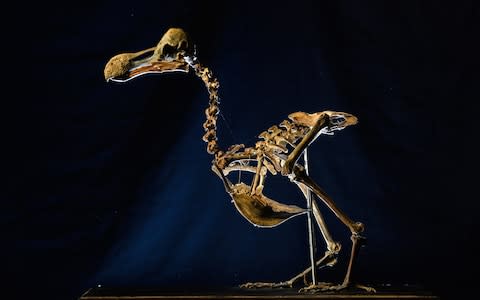Genetic code of every animal and plant on Earth to be mapped to end extinction

The genetic code of all 1.5 million known species of animals, plants and fungi living on Earth will be mapped to save help species from extinction and boost human health.
In a multi-billion pound collaboration involving scientific institutes from around the globe the genomes of all eukaryotic species - organisms with complex cell structures - will be sequenced to learn more about their biology.
It could also help bring them back from the dead if they do go extinct. Scientists are already attempting to use the stored DNA from the northern white rhino to restore the species, which became functionally extinct earlier this year with the death of the last male.
And researchers at Harvard University have used genetic sequencing to map the genome of the extinct wooly mammoth in the hope it could be resurrected.
Scientists also hope that unpicking the genetic code from plants could help uncover new treatments for infectious diseases, slow ageing, improve crops and agriculture, and create new bio-materials.
In Britain, organisations including the Natural History Museum, the Royal Botanic Gardens at Kew and the Wellcome Sanger Institute have joined forces to sequence Britain’s 66,000 species of animals, plants, protozoa and fungi.
Dubbed the Darwin Tree of Life Project it is expected to take ten years and cost £100 million. Once completed all the information will be publically available to researchers.
Professor Sir Mike Stratton, Director of the Wellcome Sanger Institute, said: “Globally, more than half of the vertebrate population has been lost in the past 40 years, and 23,000 species face the threat of extinction in the near future.
“Using the biological insights we will get from the genomes of all eukaryotic species, we can look to our responsibilities as custodians of life on this planet, tending life on Earth in a more informed manner using those genomes, at a time when nature is under considerable pressure, not least from us.”

Many scientists believe that Earth has now entered the sixth mass extinction with humans have created a toxic mix of habitat loss, pollution and climate change, which has already led to the loss of at least 77 species of mammals, 140 types of bird since and 34 amphibians since 1500.
They include creatures like the dodo, Steller’s Sea Cow, the Falkland Islands wolf, the quagga, the Formosan clouded leopard, the Atlas bear, the Caspian tiger and the Cape lion.
It is the biggest loss of species since the Cretaceous-Tertiary mass extinction which wiped out the dinosaurs 66 million years ago.
The Wellcome Sanger Institute already has a head start, after beginning a project to sequence the genomes of 25 of Britain’s species earlier this year, including red and grey squirrels, the European robin, the Fen raft spider and the blackberry.
Scientists say that sequencing every eukaryotic species will revolutionise the understanding of biology and evolution, bolster efforts to conserve as well has helping protect and restore biodiversity.

Dr Tim Littlewood, Head of Life Sciences Department at the Natural History Museum, said: “Whether you are interested in food, disease, or speciation, the history of how every organism on the planet has diverged and adapted to its environment is recorded in its genetic makeup.
“How you then harness that is dependent on your ability to understand it.
“We will be using modern methods to get a really good window on the present and the past. And of course a window on the past gives you a prospective model on the future.”
Sir Jim Smith, Director of Science at Wellcome, said: “Try as a I might I can’t think of a more exciting more relevant more timely or more internationally inspirational project or one that will create such a legacy for scientists in the future.
“Since 1970, humanity has wiped out 60 per cent of animal populations. About 23,000 of 80,000 species surveyed are approaching extinction.
“We are in the midst of the sixth great extinction event of life on our planet, which not only threatens wildlife species but also imperils the global food supply.
“As scientists we all realise we desperately need to catalogue life on our fragile planet now.I think we’re making history.”

